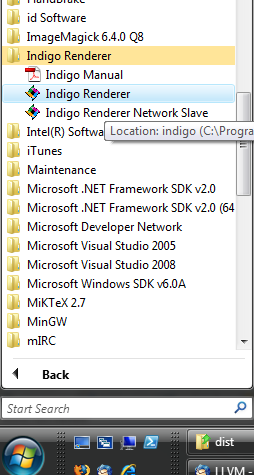
- #Access indigo server from outside network how to
- #Access indigo server from outside network manual
- #Access indigo server from outside network pro
- #Access indigo server from outside network mac
#Access indigo server from outside network mac
Please user our SecuritySpy System Requirements Calculator to help you choose a system to suit your Mac, or a Mac to suit your desired system.īy way of illustration, following is a rough guide to the maximum number of IP cameras of different Megapixel (MP) resolutions that you can connect to various Macs, assuming the cameras are providing H.265 video at 8 frames per second (FPS) that is being recorded by SecuritySpy directly to disk with no recompression: The amount of processing power required varies depending on a number of factors. SecuritySpy will work on any Mac running at least macOS (OS X) 10.13.6. Read more in the USB and Thunderbolt Devices section of this manual. Therefore, if you do decide to use a local device, use just one of them, combined with one or more IP cameras. While these can make useful and inexpensive additions to CCTV systems, they have significant limitations: they are typically indoor-only, they have to be close to the Mac due to cable length restrictions, and bandwidth limits mean that you may not be able to use more than one at a time. The third type of camera is one connected by USB, FireWire or Thunderbolt, or a built-in FaceTime camera (SecuritySpy calls these "local devices" to distinguish them from network devices). Still, if you want to connect analog cameras to SecuritySpy, you can do so using Axis Video Encoders. Analog cameras provide very poor quality video by today's standards, and should not be used. Previous-generation CCTV systems employed analog cameras, which transmit analog video signals over coaxial cable. Read more in the Network Cameras section of this manual. IP cameras are designed for CCTV, and can offer high quality video, with additional features such as infra-red night vision, vandal resistance and Pan/Tilt/Zoom. These are digital devices that transmit high-definition video over Ethernet or wireless (WiFi) networks. Types of Camera Network CamerasĪll new systems should use IP cameras (network cameras). Your main choices are which cameras to use, and which Mac computer, for your SecuritySpy video surveillance system.
#Access indigo server from outside network how to
The sections Connecting to a Camera Over Ethernet and Connecting to a Camera Over WiFi guide you though the process of configuring IP cameras, and the Remote Access section shows you how to set up access to your system from the Internet.įor information about using the SecuritySpy software itself, please see the SecuritySpy User Manual. To read more about cameras, see the Network Cameras section. Take a look at the Example Systems section, which describes the hardware you need for the most common system configurations. Start by reading the Choosing a System section, which describes the various choices of cameras and Mac models available. Three questions usually arise when setting up a new system: Which Cameras Should I Buy?
#Access indigo server from outside network manual
Posting is provided "AS IS" with no warranties, and confers no rights.This manual is designed to help you create a complete CCTV system based around SecuritySpy, our macOS video surveillance software. Please no e-mails, any questions should be posted in the NewsGroup This


#Access indigo server from outside network pro
Microsoft's Thrive IT Pro of the Month - June 2009

MCTS, MCT, MCSE, MCSA, Security+, BS CSciĢ008, Vista, 2003, 2000 (Early Achiever), NT4 I strong discourage this route, I would recommend the first two options. If you must gain access internally, you should create a local account on the system that holds the data and users can authenticate to the local machine and not the domain. When you open something like that up, there are plenty of folks that will hammer away and find a weekness and get in as well.ĭo you have a DMZ that you host a webdav or ftp site?Ĭould you build up an sslvpn, thereby you could grant external users access to the internal system and keep things secure? I would suggest you not be popping holes in your firewall to gain access to servers inside of your enterprise.


 0 kommentar(er)
0 kommentar(er)
